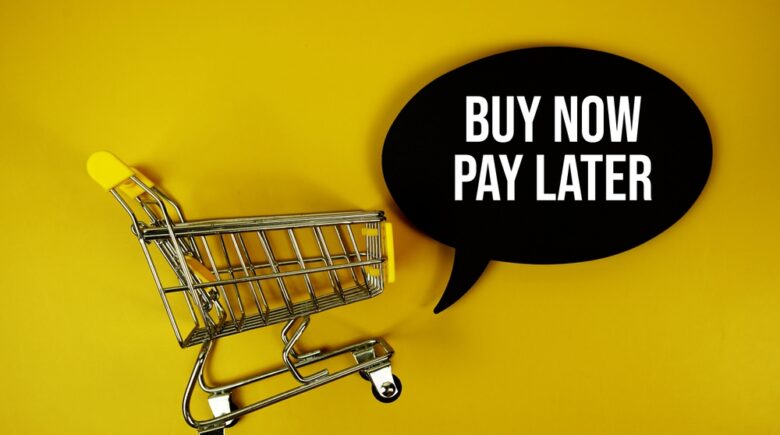That sleek new gadget catches your eye online. The price tag makes you hesitate, but then you spot those magic words: "Buy Now, Pay Later." Four easy payments? No interest? Suddenly, that purchase feels completely manageable. If you’re like millions of Americans, you’ve probably used BNPL services like Affirm, Klarna, or Afterpay. These platforms have exploded in popularity, especially among millennials who prefer flexible payment options over traditional credit cards. However, what seems like a financial lifeline might actually be a slippery slope. The convenience of deferred payments comes with hidden costs that many consumers don’t fully understand until it’s too late. Before you click that checkout button, you need to know exactly what you’re signing up for.
The Hidden Fees Behind Your BNPL Checkout
The appeal of BNPL services lies in their simplicity. Most platforms advertise zero-interest financing if you pay on time. Moreover, the approval process takes seconds, requiring minimal information compared to traditional credit applications. This frictionless experience has made BNPL the payment method of choice for over 45% of millennials, according to recent data from CNBC. Nevertheless, the "free" aspect only applies under perfect conditions.
Late payment fees represent the first major trap. Miss a payment deadline by even one day, and you’ll typically face charges ranging from $7 to $34, depending on the provider and purchase amount. Furthermore, some services charge additional fees for each subsequent missed payment. These penalties add up quickly, especially if you’re juggling multiple BNPL accounts across different retailers. A $200 purchase split into four payments can easily balloon to $250 or more if you miss just two payment deadlines.
Additionally, not all BNPL arrangements are interest-free. Longer-term payment plans, particularly those extending beyond three months, often carry interest rates comparable to credit cards—sometimes reaching 30% APR or higher. The fine print matters enormously here. While short-term installment plans might genuinely charge zero interest, extended payment options frequently include financing charges that the marketing materials downplay. Therefore, that "affordable" $1,000 laptop could end up costing you $1,300 by the time you finish paying.
How Deferred Payments Impact Your Credit Score
Credit reporting practices for BNPL services remain inconsistent and confusing. Unlike credit cards, most BNPL providers don’t report your payment history to all three major credit bureaus. Consequently, making on-time payments won’t necessarily help you build credit. However, the opposite isn’t always true. Many providers will report delinquent accounts to credit bureaus, meaning late payments can damage your score even though timely payments don’t improve it.
This asymmetry creates a particularly frustrating situation for consumers trying to establish credit. Traditional credit products reward responsible behavior by boosting your credit score over time. In contrast, BNPL services often function as a one-way street—you get penalized for mistakes without receiving credit for good behavior. Experian recently announced plans to include BNPL payment data in credit reports, but implementation varies significantly across providers. Until standardization occurs, consumers face an uneven playing field.
Beyond direct credit reporting, BNPL usage affects your borrowing capacity in other ways. When you apply for a mortgage or auto loan, lenders review your debt-to-income ratio. Outstanding BNPL balances count as debt obligations, potentially reducing the loan amount you qualify for. Additionally, having multiple BNPL accounts can signal financial overextension to underwriters, even if you’re making all payments on time. This hidden impact on your financial profile can surprise you when you’re ready to make major purchases.
The Psychology of Spending More
BNPL services fundamentally change how we perceive prices. Research from the Federal Reserve Bank of San Francisco shows that consumers spend 20-30% more when using deferred payment options compared to paying upfront. The psychological mechanism is straightforward: breaking a $400 purchase into four $100 payments makes it feel more affordable, even though the total cost remains identical. This mental accounting trick encourages overspending.
Retailers understand this psychology perfectly. That’s why they prominently display BNPL options at checkout and integrate them throughout the shopping experience. Some websites even show the installment price more prominently than the full price, anchoring your perception to the lower number. Consequently, you might add more items to your cart than you originally intended. The ease of approval amplifies this effect—there’s no moment of friction to make you reconsider whether you really need that purchase.
The cumulative effect becomes problematic when you use BNPL across multiple retailers. You might have four payments of $50 due this month, three payments of $75 next month, and five payments of $40 the month after. Individually, each commitment seems manageable. However, these obligations quickly snowball into a significant monthly burden. According to a Credit Karma survey, 34% of BNPL users have fallen behind on payments, and 72% believe their credit scores dropped as a result.
Making Smarter Payment Decisions
Despite the risks, BNPL services aren’t inherently bad financial tools. They can work well for specific situations when used strategically. For instance, splitting a necessary purchase into short-term, interest-free payments makes sense if you have the income to cover the installments but need to preserve cash flow temporarily. The key is treating BNPL like any other form of credit—with respect and careful planning.
Before using BNPL, ask yourself critical questions. Can you afford this purchase if you had to pay the full amount today? Do you have a stable income to cover all installment payments? Have you checked whether you’re already juggling too many payment plans? If you answer "no" to any of these questions, you should reconsider the purchase. Furthermore, always read the terms and conditions carefully, paying special attention to late fees, interest rates for longer plans, and what happens if you miss a payment.
Alternative payment strategies often serve you better financially. Building an emergency fund allows you to make purchases without splitting payments. Using a cashback credit card and paying the full balance monthly gives you rewards without interest charges. Moreover, simply waiting and saving for purchases helps you avoid debt entirely while giving you time to determine whether you truly need the item. These traditional approaches might feel less exciting than instant gratification, but they protect your financial health long-term.
Regulatory Changes on the Horizon
Government agencies have started scrutinizing BNPL services more closely. The Consumer Financial Protection Bureau launched an inquiry into major BNPL providers in 2021, examining their business practices and consumer protection measures. This regulatory attention signals potential changes ahead. Industry observers expect new rules requiring clearer disclosure of terms, standardized credit reporting, and stronger consumer protections against predatory practices.
Several states have already introduced legislation specifically targeting BNPL services. These proposals typically focus on transparency requirements, ensuring consumers understand the true cost of deferred payments before committing. Additionally, lawmakers are considering whether BNPL providers should face the same regulations as traditional lenders, including Truth in Lending Act requirements. Such changes would fundamentally alter how these services operate and market themselves.
For consumers, increased regulation generally means better protection and clearer information. However, it might also mean fewer interest-free options or stricter approval criteria. The industry is evolving rapidly, and staying informed about regulatory changes helps you understand your rights and options. Meanwhile, treating BNPL services with the same caution you’d apply to any credit product remains your best protection.
Buy Now, Pay Later services offer genuine convenience, but they’re not the financial free lunch they appear to be. The hidden fees, credit score complications, and psychological spending traps can turn a helpful payment option into a debt spiral. As these services become more prevalent and regulations catch up with the industry, understanding the true costs becomes essential for protecting your financial wellbeing. The smartest approach? Use BNPL sparingly and strategically, only for purchases you can genuinely afford. Remember that deferred payments don’t make things cheaper—they just postpone the financial reckoning. By staying informed and making conscious decisions, you can enjoy the flexibility of modern payment options without falling into the trap of paying more later.
References
-
Dickler, J. (2023). "Buy now, pay later loans can hurt your credit score. Here’s what to know." CNBC. https://www.cnbc.com/select/buy-now-pay-later-and-your-credit-score/
-
Rossman, T. (2023). "Buy now, pay later statistics: 2023 trends and usage." Bankrate. https://www.bankrate.com/personal-finance/buy-now-pay-later-statistics/
-
Consumer Financial Protection Bureau. (2022). "Buy Now, Pay Later: Market trends and consumer impacts." CFPB. https://www.consumerfinance.gov/about-us/newsroom/cfpb-report-reveals-consumer-risks-from-explosive-growth-in-buy-now-pay-later-loans/

